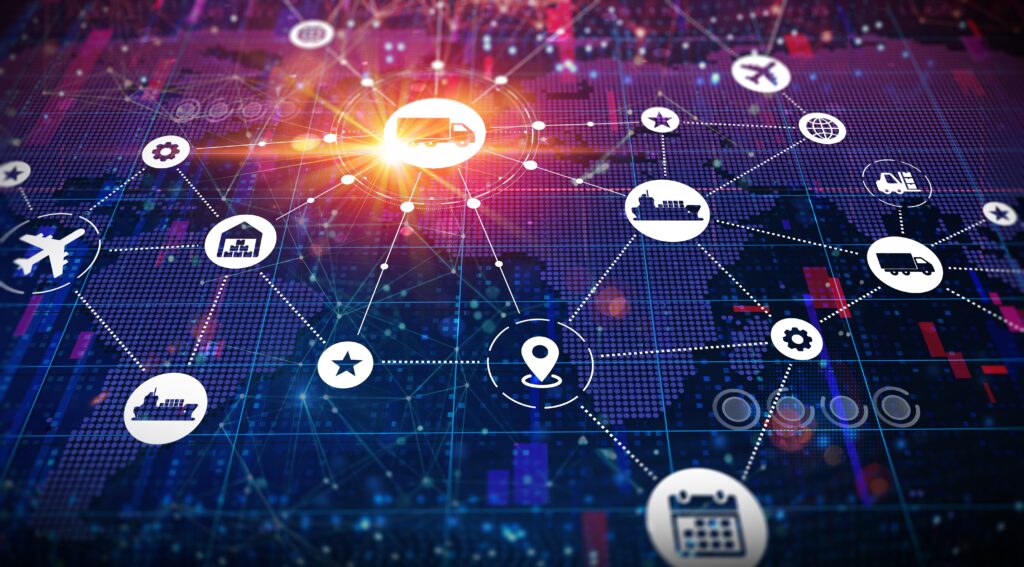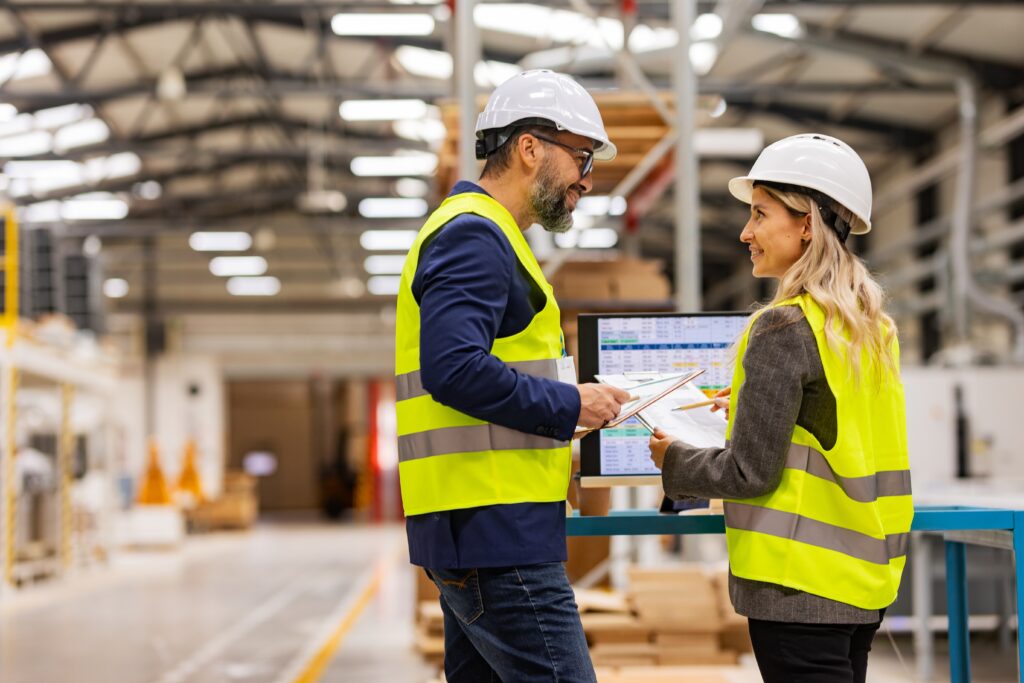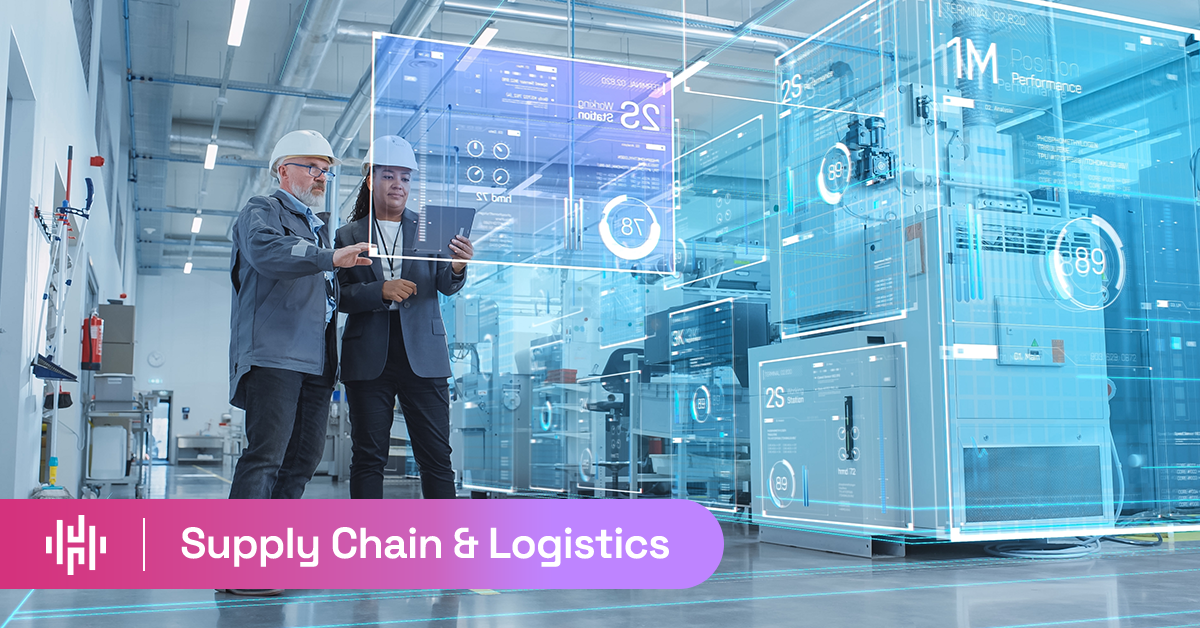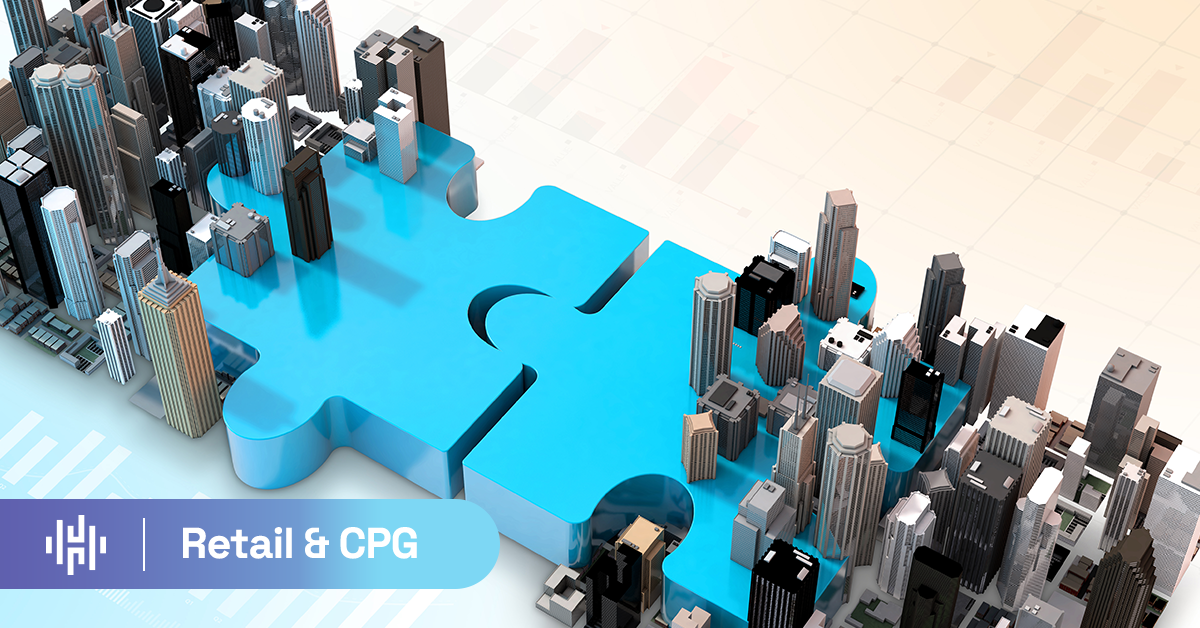
Melanie Sims
Lead, Supply Chain Solutions

Ryan Klapper
AI Engineer
In early 2020, a factory shutdown in one part of the world could send shockwaves through supply chains across the globe.
For decades, supply chains were optimized for efficiency—just-in-time inventory, lean operations, and cost minimization. But when COVID-19 struck, the cracks in this model (among a multitude of others) became painfully obvious. What followed was a global scramble: companies tried to reroute shipments, source alternative materials, and make decisions with outdated or incomplete information.
Fast forward to today, and the game has changed. AI is no longer a theoretical enhancement—it’s a strategic necessity. But technology alone won’t solve the problem. Building future-proof supply chains requires true collaboration between AI teams and supply chain operators.

Where AI Fits in Modern Supply Chains
AI is rapidly expanding what’s possible in supply chain operations. From integrating disparate systems to interpreting global disruptions, AI enables teams to move faster, respond smarter, and operate more efficiently.
We’ve seen AI help:
- Connect and harmonize complex data systems
- Power control tower solutions that interpret and act on real-time information
- Forecast and respond to macro-level disruptions like geopolitical shifts or extreme weather events
Rather than a single application, AI is becoming a layer woven across the entire supply chain—from planning to execution.
Why AI is Uniquely Positioned to Help Supply Chains
Supply chains are inherently complex and global. They span suppliers, manufacturers, ports, distribution centers, and retailers—often across dozens of countries and hundreds of partners. Add to that a constant stream of variables: weather, demand shifts, raw material shortages, policy changes, and more.
The coordination required to manage just a handful of shipments is significant. Now scale that to a global network.
No single human—or even a team—can ingest, analyze, and act on that volume of information in real-time. That’s where AI comes in. It doesn’t just detect patterns—it learns from them. It can:
- Process billions of data points across systems and geographies
- Surface actionable insights before problems arise
- Make decisions aligned to strategic business goals, not just operational metrics
In short, AI is built for the complexity, speed, and scale that the future of supply chains demands.

Two Examples of AI in Action at Hakkoda
At Hakkoda, we’ve seen firsthand how AI and supply chain teams can build high-impact solutions—faster and smarter together. Here are two examples:
1. Tariff Impact Dashboard
With shifting global trade agreements and evolving regulations, companies need real-time visibility into how tariffs impact their operations. Our AI-powered dashboard:
- Captures and analyzes live tariff data from global sources
- Predicts cost impacts across regions, vendors, and product categories
- Helps teams scenario-plan and make strategic sourcing decisions before policies take effect
Instead of reacting after the fact, supply chain teams can now stay ahead of regulatory changes and navigate trade volatility with confidence.
2. Source-to-Target Mapping Tool
System integration is a major pain point—especially during M&A or digital transformation efforts. Traditional data mapping is manual, slow, and error-prone. Our AI-powered mapping tool:
- Automatically identifies source and target schema relationships
- Suggests and validates data transformations
- Speeds up integration timelines and reduces dependency on technical resources
It’s not just automation—it’s acceleration with accuracy.
The Real Innovation? Collaboration.
These solutions didn’t come from AI teams working in a vacuum. They emerged from close collaboration with supply chain experts—people who understand the daily friction points, dependencies, and edge cases that AI alone would miss.
This is the future:
- Supply chain teams surfacing critical pain points
- AI teams identifying where automation, prediction, or augmentation can help
- Shared ownership of building resilient, responsive systems
The goal isn’t to replace supply chain expertise—it’s to amplify it.

The Future of Supply Chains: Building Resilience in the Face of Volatility
If the past few years have taught us anything, it’s that volatility is here to stay. Resilient, adaptable supply chains won’t be built through brute force—they’ll be built through intelligent, collaborative systems.
AI can be the engine. But supply chain teams are the steering wheel. The organizations that bring both together—early and often—will be the ones that not only survive, but thrive in the new global reality.
Ready to join their ranks? Talk to one of our experts today.




